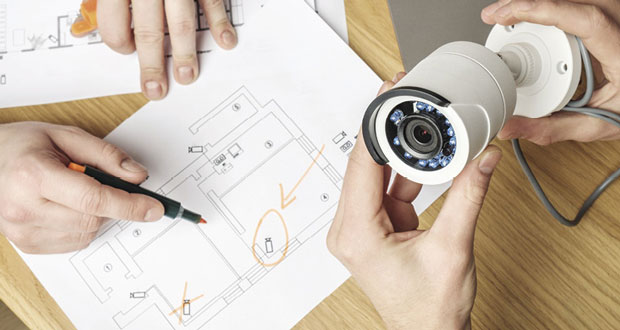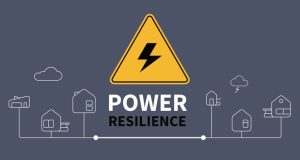James Allardyce, Director of Solution Sales at Chubb, explains how a range of security technologies can be employed to empower a new generation of safer and healthier buildings
The pandemic was a catalyst for significant change within the work environment, forcing a need for systems and approaches to adapt, or risk becoming outdated or extraneous. It began with the very first panicked shutdown of buildings — kick-starting a home-working revolution and moving on to where we are right now, the embracing of a very different future. Buildings and the spaces within them must be adapted from the open-office, shared design of pre-pandemic to reimagined de-densified environments. With this hurdle navigated, it’s now time to move onwards with a renewed focus on maintaining this environment in as healthy a way as possible by utilising the latest innovations.
ALARMS AND DETECTION
Regardless of the size of your building, the very cornerstone of your security system is advanced technology. This keeps your building safe while offering employees reassurance that you care and look after their wellbeing. A conventional intruder detection system is a scalable security solution that can be fine-tuned to your building and employee’s needs, offering dynamic features such as alarm signaling, door and window opening detection, audible warning deterrents, and lone worker pendants — crucial in scaled-down environments in which there is no element of ‘safety in numbers’ (although, in our world of fast-moving safety and security innovation, we are certain there is no need to rely on this adage).
Alarms aren’t solely for intruder detection; there are supplementary devices that also work to keep your building healthy, raising the alarm if — for example — an environmental trigger, such as an increase in humidity or flood ingress, occurs.
CCTV AND VIDEO SURVEILLANCE
CCTV and video monitoring is an increasingly sophisticated technology with tailorable elements such as video analytics, which use algorithms to not only reduce the incidences of false alarms but also detect loitering, direction of travel, objects left and disappearance of items, along with the ability to programme ‘rules’. Real-world applications for this technology are vast — including car forecourts, in which loitering can lead to sales; and festivals or large events, where it can find, for example, a missing person in a red coat simply by inputting a set of rules. Besides enhancing detection, AI and deep learning can be used to further understand how users move through environments. This data could then help us develop more efficient layouts within our buildings.
ACCESS CONTROL
Maintaining a healthy building denotes a need to consider who is inside the premises while safely managing entry and access points. As we move out of the pandemic, the focus may shift away from occupancy and again towards security, however, by marrying the two, we can enhance the security of users. Preparedness is the bedrock of evolution — we now know how quickly businesses must respond to massive environmental events such as infectious disease, and there is no reason to drop the ball should this happen again. We have the technology to counterbalance the challenges of ‘breathing the same air’ with the ability to control occupant density.
You can use access controls — door entry systems, biometrics and reader technologies — to both gain access to a building and tell us who is inside. Mobile credentials, for instance, allows you to authenticate with your smartphone and use it as your key to access a building or QR codes can be used to enable temporary visitor access. Using mobile devices for access control offers numerous benefits; they are commonly used and accessible to all building users, they eradicate the need for plastic badges providing a more environmentally friendly solution, they help improve safety practices preventing tailgating and people sharing passes, and they negate the need for a receptionist to manage building access, creating resource and costs savings.
We also have control over occupancy levels with smart, live occupancy systems, which provide real-time data. The creation of a ‘touchless’ workplace has already begun — Bluetooth and facial recognition play a key role in access controls.
FLEXIBLE SYSTEMS FOR THE FUTURE
If the pandemic has taught us anything, it’s that we need to be flexible within our workplace and our perception of its requirements. Security needs have changed and bespoke solutions are central to the provision of relevant products and services. Sophisticated needs no longer equate to ‘difficult’: integrated security systems allow you to protect each of your assets with great ease and efficiency — regardless of a scattering of geographical locations — while collating the data centrally. No need to access separate systems to view data sets; powerful technology stores and safeguards all this data in one information management system.
The ongoing need for virus control is apparent and a crucial part of a much-discussed ‘new normal’ — systems that detect body temperatures range from a handheld scanner to a sophisticated set of technologies that monitor temperatures at access points. The system is standalone and needs no network integration, making it easy to offer employees, visitors and customers peace of mind that their health and wellbeing is at the forefront of your operations.
Technology and innovation offered businesses a robust roadmap out of the pandemic, and this focus will continue to lead innovation — developments in technology mean that safer, healthier and more secure work environments are now possible.





